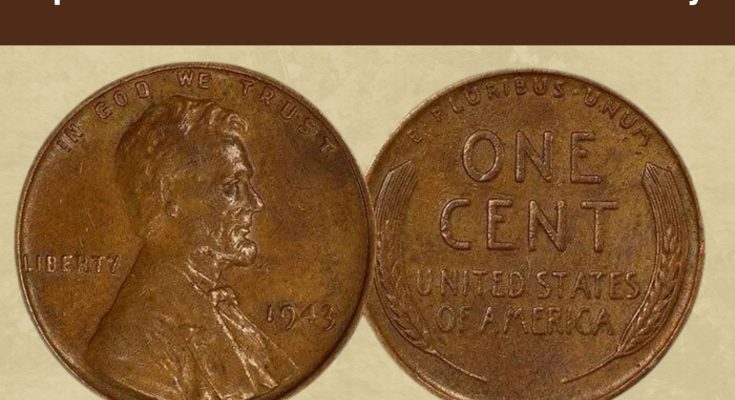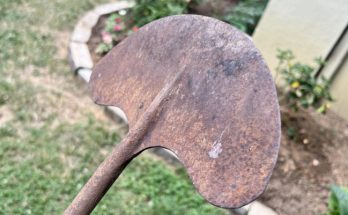These include error coins, produced as a result of mistakes made by the Mint. Error coins are, by definition, rare things. And that means some collectors are prepared to pay high prices to acquire them.
So just how much are they worth? That’s what we’ll find out, as we take a tour of the most valuable Wheat penny errors out there…
Most Valuable Wheat Penny Errors Coin
1. 1943 Double Die Obverse Wheat Penny
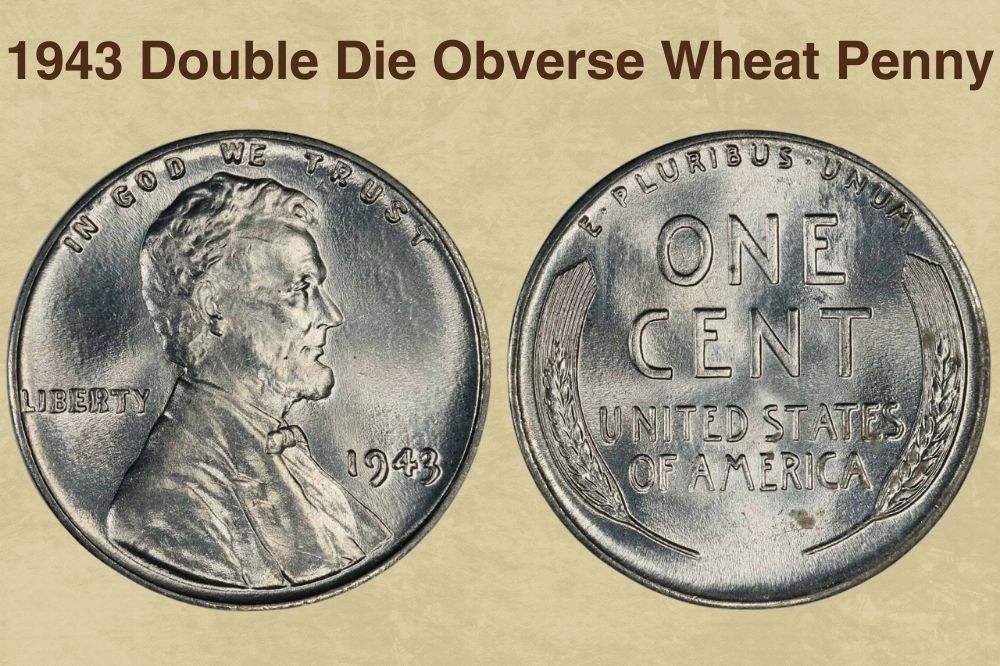
Double die coins result from an error during the production of the dies from which coins are struck. The dies usually have to be struck several times to capture every detail of the design. And if there’s any movement between strikes, a double image will be left on the die.
That double image is then transferred onto the coins struck by the die. If the double image is on the die with the obverse design, the error is known as a “double die obverse”. You may see the abbreviation DDO in coin catalogs.
If the double image is on the reverse, it’s a double die reverse, or DDR.
In 1943, one of the dies used to strike the obverse design at the Philadelphia mint had a double image. This particular form of doubling is known as distended hub doubling. And the double image was very pronounced – the strongest example of a double die error on any Lincoln cent, in fact.
The doubling is most obvious on the letters of the word “Liberty”, and on the lower parts of the digits 9 and 3 in the date.
Values vary according to the condition of the coin. A circulated example in a low grade is worth around $30. That climbs to $100 for a coin in “about uncirculated” condition, AU55. And an uncirculated example graded MS65 will be worth around $1,500.
Check 1943 Wheat Penny Error Full List with Value
2. 1943 (D) Repunched Mintmark
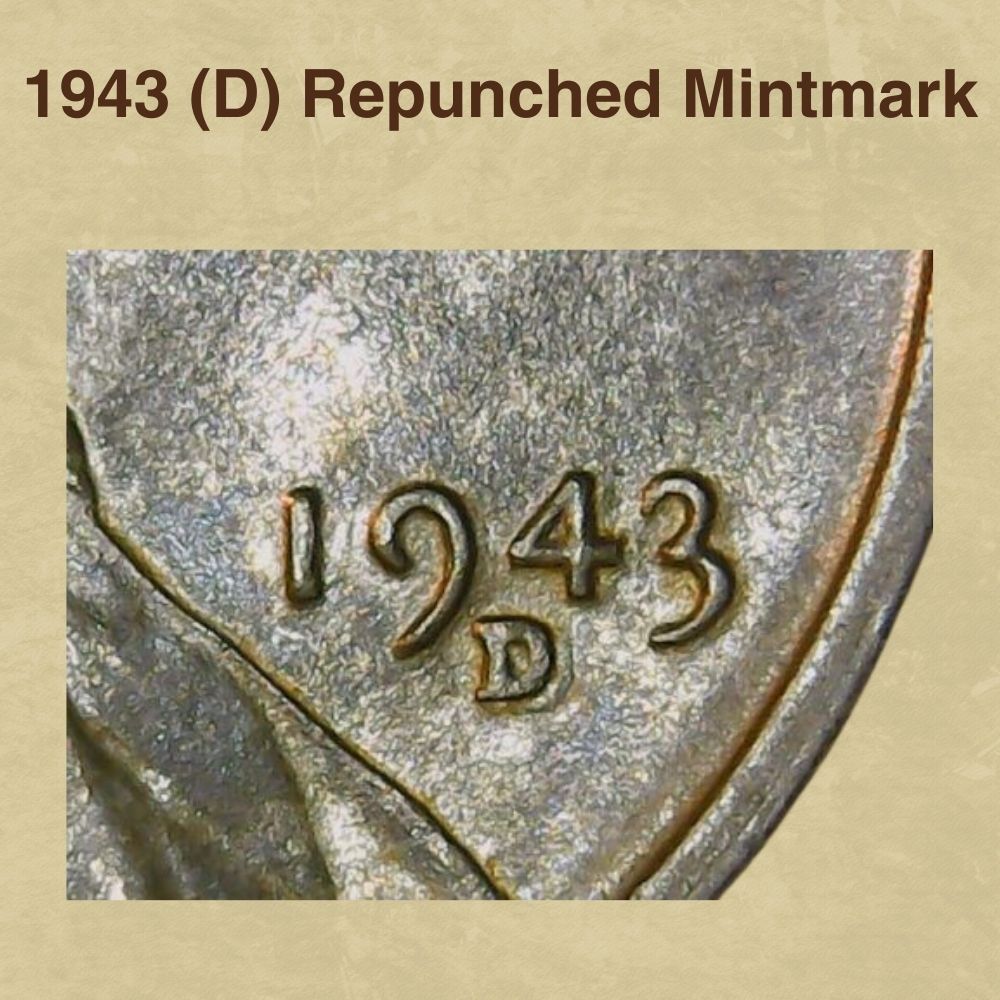
Wheat pennies minted in Philadelphia don’t have a mintmark. But if they were minted elsewhere, a letter will tell you the location.
Coins stamped with a D were struck at the mint facility in Denver. And in 1943, some of the Wheat pennies minted there were mistakenly punched more than once with their mintmark. This error is known as a “repunched mintmark”, often abbreviated to RPM in coin catalogs.
The first mintmark appears below and to the left of the second, stronger mark. Examples graded F12 (fine) are worth about $75, while about uncirculated examples are around $200.
As ever, uncirculated coins are the most valuable. Mint state coins range in value from around $1,000 to $15,000 for the finest examples.
Check 1943 Wheat Penny Error Full List with Value
3. 1944 D/S
Sometimes you’ll find mintmarks for more than one location on the same coin. That was the case for some of the Wheat pennies minted in 1944. These have a D mintmark for Denver stamped over an S mintmark for San Francisco.
They were struck in Denver, but somehow a die with the S mintmark was mistakenly used. The coins that resulted from this error had the S buffed out, and a new D mintmark punched in its place. But if you look carefully, you can still see the ghost of the original mark.
Circulated examples in fine condition are worth about $75, rising to $260 for coins graded about uncirculated.
But if you want to get your hands on a mint state coin, you’ll need to spend some serious cash. Values range from $4,000 to $20,000 for the very finest examples.
Check 1944 Wheat Penny Error Full List with Value
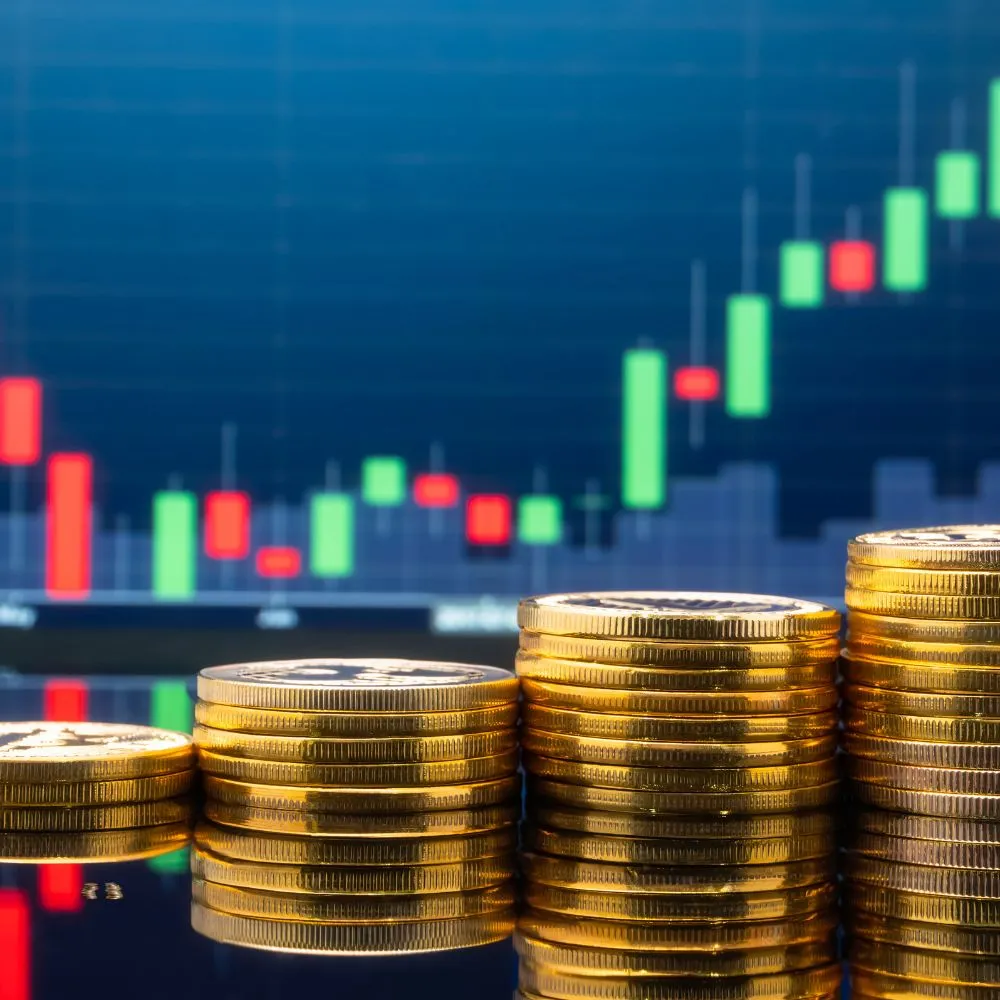
FREE Appraisal & Sell Your Coins
If you are still unsure about the price of your coins, you can appraise and sell your coins for free through our verified platform.
4. 1936 Double Die Obverse
Among the Wheat pennies struck at Philadelphia in 1936 are a number of examples of a double die obverse error. Here the doubling is most evident on the motto “In God We Trust” and on the word “Liberty”. It’s also clear on every digit of the date.
Even examples in lower circulated grades can fetch around $100. But prices rise somewhat slowly from there.
You can find about uncirculated (AU55) examples for around the $200 mark. A gem quality MS65 example is about $600. And the finest known specimens are worth around $5,000.
Check 1936 Wheat Penny Error Full List with Value
5. 1909 S Over Horizontal S
 100vw, 1000px” data-lazy-src=”https://www.coinvaluechecker.com/wp-content/uploads/2023/05/1909-S-Over-Horizontal-S-1.jpg” data-pin-description=”1909 S Over Horizontal S” data-pin-title=”Top 11 Most Valuable Wheat Penny Error Coins (With Pictures)” /></div>
<p>1909 is a key date for Wheat pennies, and good quality examples – even without errors – can command serious money.</p>
<p>But some of the coins minted in San Francisco also have an interesting error – a second S mintmark punched over the first. The first mintmark was positioned horizontally, at 90 degrees to the second.</p>
<p>It’s hard to spot this error without a loupe or microscope. But look closely, and you’ll see the edge of the first S protruding from the curve on the right-hand side of the second.</p>
<p>Values for circulated coins are around $100, with about uncirculated examples valued at around $250.</p>
<p>There’s a big range in the value of mint state coins, according to the color and quality. The independent coin graders, the PCGS, value a brown MS60 penny at $330.</p>
<p>But the finest known examples are red pennies graded MS67. There are five of these in existence, and the last time one was sold at auction was in July 2022. That coin fetched an astonishing $32,900.</p>
<p><a href=) Check 1909 Wheat Penny Error Full List with Value
Check 1909 Wheat Penny Error Full List with Value
6. 1917 Double Die Obverse
The Wheat pennies minted in Philadelphia in 1917 are another example of coins that include a double die obverse error.
The doubling here is most obvious on the words “In God We Trust”, as well as on the date, particularly the 9 and the second 1.
Examples in circulated grades command prices of around $200. In about uncirculated condition, the value is around $1,500. Prices for mint state coins start at $3,750 for a brown coin graded MS60.
But the finest known example is a single red penny graded by the PCGS MS67+. That last sold at auction in 2019, achieving a price of $120,000. Today, the PCGS estimates its value at $135,000.
Check 1917 Wheat Penny Error Full List with Value
Best Coin Dealer Near Me
Want to Find the best coin dealer near you? Here we can help. (with customer reviews and Rating)
7. 1922 No D
 100vw, 1000px” data-lazy-src=”https://www.coinvaluechecker.com/wp-content/uploads/2023/05/1922-No-D-1.jpg” data-pin-description=”1922 No D” data-pin-title=”Top 11 Most Valuable Wheat Penny Error Coins (With Pictures)” /></div>
<p>The 1922 Wheat penny includes another example of a mintmark error. It occurred in some of the coins struck at the mint facility in Denver.</p>
<p>You might imagine that the absence of a mintmark means that the coin was struck in Philadelphia. But in fact <em>no</em> Wheat pennies were struck in Philadelphia that year.</p>
<p>The absence of a D was the result of overzealous polishing of a Denver die, removing the mintmark. Some coins have a very faint D. These are more valuable than standard 1922(D) pennies, but less valuable than those that have no mintmark at all.</p>
<p>As a result of the price premium for this error, there are <a href=) a number of fakes on the market. It’s relatively easy for an unscrupulous seller to rub out the D from a normal 1922 penny.
a number of fakes on the market. It’s relatively easy for an unscrupulous seller to rub out the D from a normal 1922 penny.
One thing to look for is the strength of the strike on the obverse. Genuine No D 1922 pennies are usually weakly struck. If your coin has good detail elsewhere, particularly on the motto “In God We Trust”, it’s probably a fake.
Find the real thing, though, and you could be in the money. 1922 pennies where the D is completely absent start at about $500, even for coins in poor condition.
Values for about uncirculated and mint state coins depend on whether the reverse is strongly or weakly struck. Coins with a weakly struck reverse are less valuable, though will still command high prices. Color is important too.
A brown coin with a strong reverse is valued by the PCGS at $6,350 at AU55, $14,000 at MS60 and $90,000 at MS65.
The finest red and brown coin with a strong reverse known to exist is a single example graded MS65+. That’s valued at $150,000.
And a red coin with a strong reverse graded MS64 is valued by the PCGS at a whopping $275,000.
Check 1922 Wheat Penny Error Full List with Value
8. 1955 Double Die Obverse
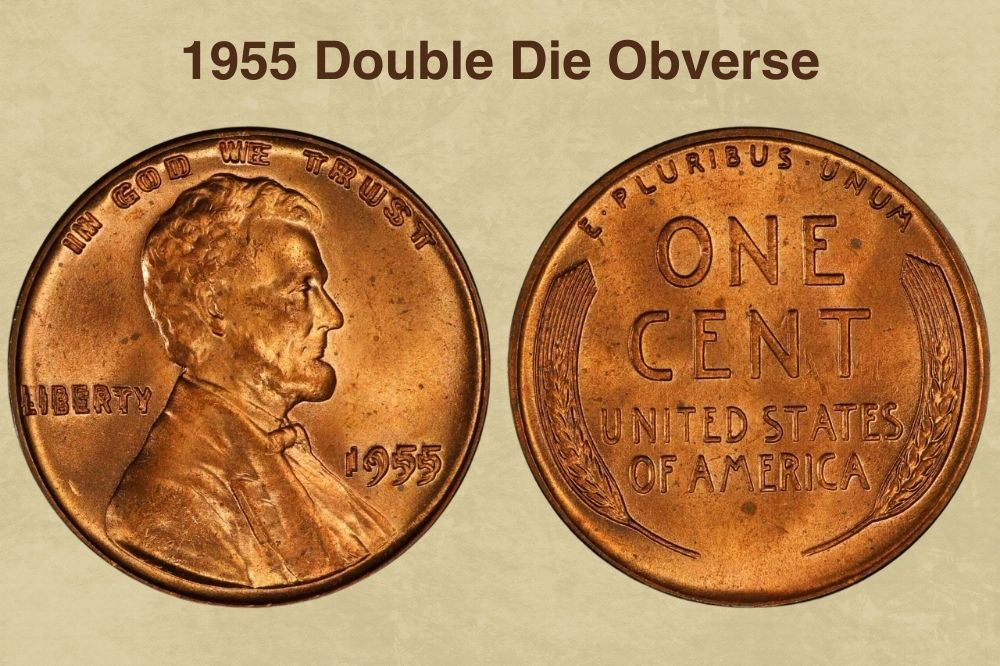
1955 was another year that saw some Wheat pennies struck with a double die error. In this case, they were minted in Philadelphia.
Here, the doubling is prominent across the design. You’ll see it in the date, the word “Liberty”, and the motto “In God We Trust”. And it’s clear enough to be visible to the naked eye.
Coins with this error are very valuable, even in the poorest condition. Values for circulated examples start at $1,200. A brown coin in about uncirculated (AU55) condition is valued at $2,650 by the PCGS.
Values for mint state coins start at $2,850 for a brown example. Red and brown coins are more expensive, with a value of $3,250 at MS60. And a red coin at the same grade is valued a shade higher, at $3,350.
If you want the very finest examples, you’ll need deep pockets. The finest red pennies with this error to have been assessed by the PCGS are graded MS65+. There are two of these in existence, and today they’re valued at $288,000 apiece.
Check 1955 Wheat Penny Error Full List with Value
9. 1958 Double Die Obverse
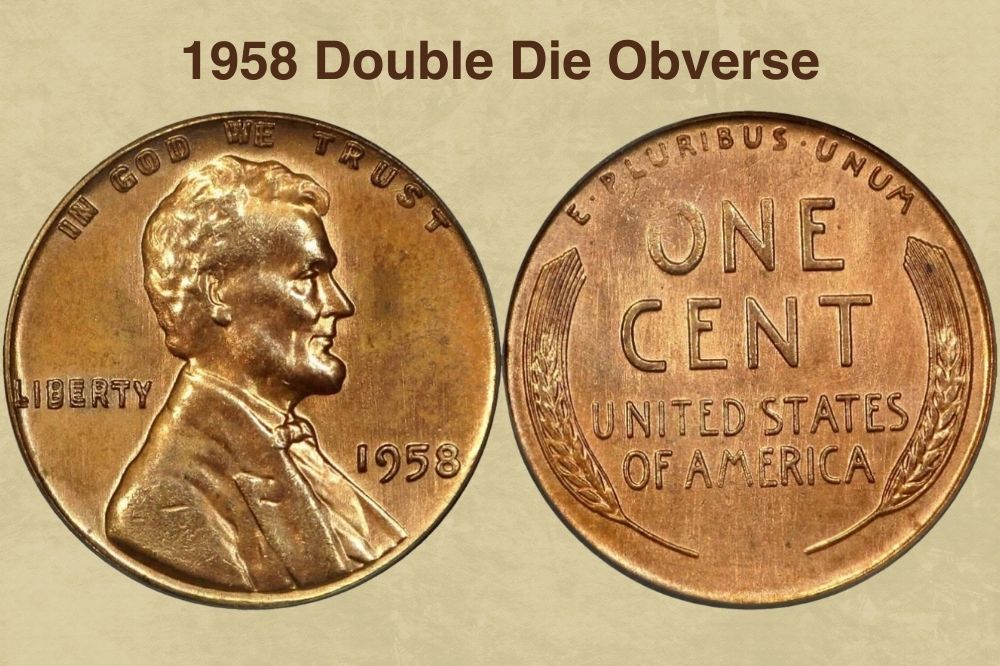
In the world of rare error coins, there aren’t many rarer than the 1958 double die obverse. More than 252 million Wheat pennies were struck in Philadelphia that year. And of all those coins, just three have been found with doubling on the obverse.

FREE Appraisal & Sell Your Coins
If you are still unsure about the price of your coins, you can appraise and sell your coins for free through our verified platform.
The doubling here is crisp and clear. It’s apparent throughout the lettering of “In God We Trust”, as well as the word “Liberty”.
The PCGS has graded two of those coins at MS64. And today, it values them at $340,000 apiece.
But the crème de la crème is a single coin graded MS65. And the value of that? According to the PCGS, it’s a breathtaking $1.14 million.
Check 1958 Wheat Penny Error Full List with Value
10. 1943 Bronze Cent
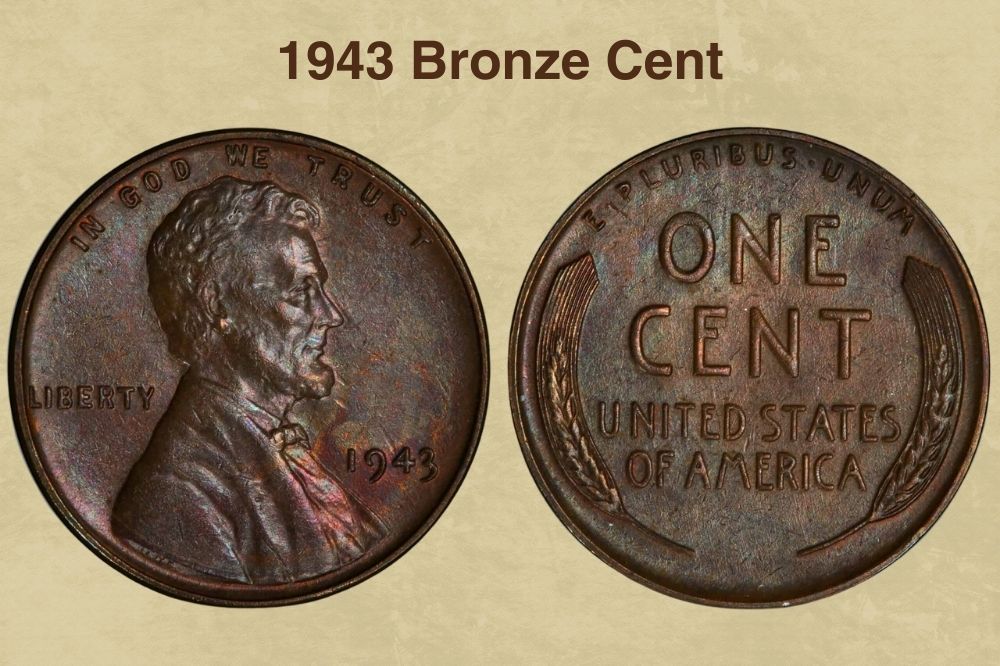
What makes this error coin so unusual is the planchet on which it’s struck. In 1943, most cents were struck on steel planchets. That was because the copper and nickel used in previous years was needed for munitions to help fight the Second World War.
But at the end of 1942, a few of the bronze planchets used for that year’s pennies were caught in the trap doors of the bins used to feed blanks into the coin presses.
No-one noticed them when the bins were refilled with the steel planchets for the following year. They were eventually struck and released into the world amongst the millions of zinc pennies.
Weirdly, the same error happened at all three mint facilities that were striking pennies that year. Between ten and fifteen examples are known to have been struck at Philadelphia, around six at San Francisco, and just one at Denver.
As ever, values of this error coin vary according to color and condition. The lowest graded example to have been assessed by the PCGS is a brown code graded extremely fine XF45. That’s valued at $215,000.
Only one red example is known to exist, and that’s graded MS63. The PCGS sets its value at a cool $1 million.
Best Coin Dealer Near Me
Want to Find the best coin dealer near you? Here we can help. (with customer reviews and Rating)
11. 1943 Experimental Shell Case Cent
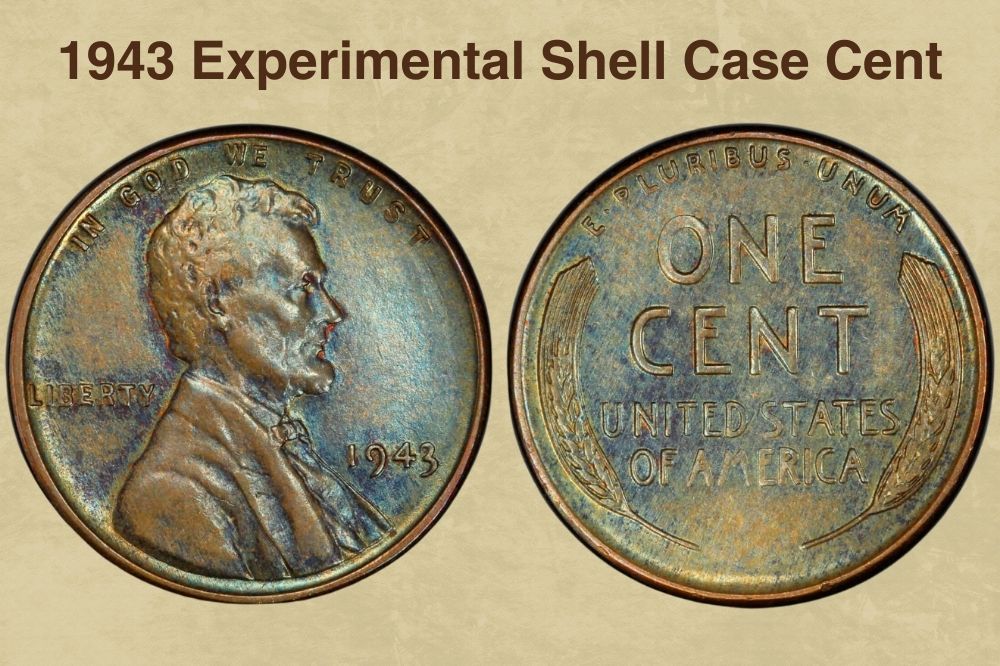
1943 saw a few other cents struck in bronze of slightly different compositions. These were experiments, rather than errors – but they’re still very cool coins!
Experts can tell the difference between these and the rare 1943 bronze error pennies by looking at the color of the metal and the characteristics of the strike. The experimental coins may have weak strikes as a result of the new alloy not taking the design as well.
Some of these coins are museum pieces. One example struck in 91.7 per cent copper, 7.5 per cent zinc and 0.8 per cent silver today resides in the Edward C. Rochette Money Museum in Colorado Springs.
If you find one of these coins, they’re very valuable. The precise value will depend on the quality of the coin, but a conservative estimate would be around $150,000.
Check 1943 Wheat Penny Error Full List with Value
Costly Mistakes
That brings us to the end of our search for the most valuable Wheat penny errors. We hope you’ve enjoyed learning about these interesting coins, and how they came to be made.
The Mint doesn’t often make mistakes, but when they do, the resulting coins are catnip for collectors. So it’s worth looking closely at your Wheat pennies for signs of doubling, repunched mint marks, or even unusual metal planchets.
Find any of these, and you could be in the money!
